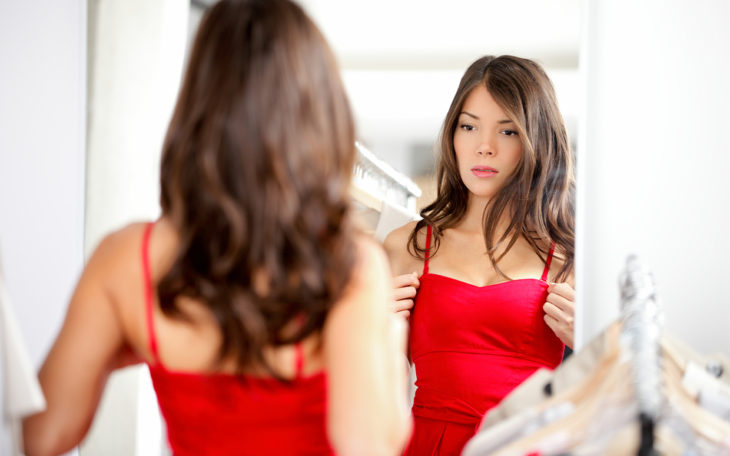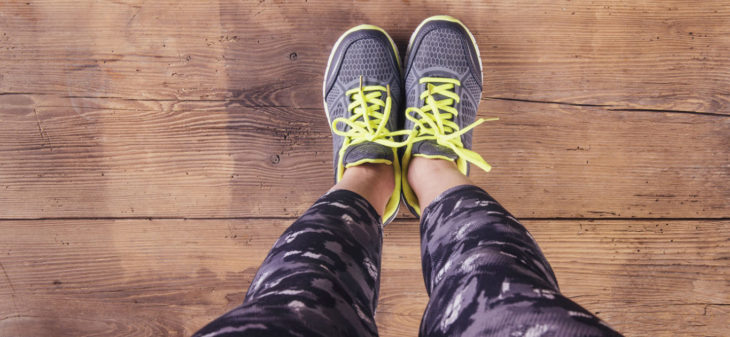When I was a kid, I wasn’t allowed to have a full-length mirror in my room. My Jewish mother loathed hearing me complain about how fat I was and refused to invest in one. I never made the purchase for myself until I was a freshman in college—and even then my mom questioned whether or not I should buy it. Now, I’m a 22 year-old fashion student and while I own a full-length reflector, I keep it at a slant. The incline makes me appear slimmer. But it’s never enough.
See, I have Body Dysmorphic Disorder. I look at my reflection and see something that just isn’t there. You could say I have an eating disorder, but I’ve never been able to fully starve myself or binge and purge. I am 5’3” and weigh 115 pounds. But when I look in the mirror, I see a girl who is 150+.
Though I have been in therapy for Body Dysmorphia since I was 9, my recovery didn’t take off until I was 18. It is sad because I know who I am and I know what I want in life, but when it comes to my shape, I just can’t shake the gripping notion that I need to look like a model.
In reality, I have never been heavy. Or even average—most people would consider me slender. I have been dancing since age 2 and I work out five times a week. Still, I am never content. It’s ironic because I am in immersed in fashion on a daily basis, and yet I’m scared of the looking glass and know that when I look in one, I will also deplore something. I don’t know if I will ever come to terms with my anatomy.

Source: Parade
I can’t pinpoint the exact moment that Body Dysmorphia took over my life, but I can tell you I was around 8 or 9. In the fourth grade, I told my friends I was anorexic. I’m sure it was related to the fact that my mom was a recovering anorexic and her biggest fear was having fat children. She would tell my sister and me, “You don’t actually want to eat that cookie.” My sister rebelled and took charge of her own self-perception. I, on the other hand, started to fall apart.
In middle school, I was the first to develop breasts. They came in slowly, and I resorted to sports bras to push them back down so I could still look like my flat-chested friends. I didn’t see these new additions as “becoming a woman”—all I saw was that I was gaining weight. Luckily, my development slowed. By ninth grade, my breasts could only be classified as mosquito bites while other girls had started busting out. I felt better. I thought all my friends looked larger with them. I wanted to stay level, like Kate Moss. I thought my lack of a chest made me appear “twiggy.”
During high school in Plano, Texas, I wouldn’t wear my contacts because then I couldn’t make out my entire core in mirrors and windows—I was just a blurred frame. I could hardly see, but that was better than perceiving something that disgusted me. Most of my high school weekends were spent in my bedroom. I was repulsed by my physique and didn’t want others to notice it. During college at the University of Colorado, it wasn’t much better and I spent nights in my dorm feeling depressed. I couldn’t figure out what I was doing wrong. Freshman year was a challenge and I needed to learn to deal without my mommy by my side. I ate healthy at all times, worked out daily, and found where my passion lied—fashion. I transferred from the University of Colorado to Parsons.

Source: Newport Academy
Though I have been in therapy for Body Dysmorphia since I was 9, my recovery didn’t take off until I was 18. It is sad because I know who I am and I know what I want in life, but when it comes to my shape, I just can’t shake the gripping notion that I need to look like a model. Even if models are constantly mocked for being too skinny, for being toothpicks—that has always been my ideal. I’m only now just beginning to understand that we’re all built differently. My mom always says, “Appreciate yourself now because one day you’ll look back and say, ‘What was I thinking?’” She’s been down this road and I want to listen to her. But now I’m just waiting to see when—if—I’ll ever love the way I’m built.
I don’t know if my obsession with having a skinnier figure will ever go away. But I am better than I have ever been before, focusing on what makes me happiest—fashion. I have realized where my talent lays and, amazingly, Teen Vogue did too. In this month’s issue, I am featured as a contributing editor and my dress design got a full page.
I know stepping into my own dress and wearing it proudly is the next step toward feeling good in my own skin.
Original by Jayme Cyk
